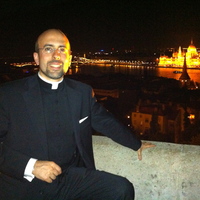
Marian Hochel
PhDr. Marian Hochel, Ph.D. is an assistant professor at the Institute of Historical Sciences of the Silesian University in Opava and an external researcher at the National Heritage Institute in the Czech Republic. He is a member of the International Napoleonic Society (Canada). A graduate of the Comenius University in Bratislava (Slovak Republic) in History and Aesthetics, he received his Ph.D. in Modern History at the Masaryk University in Brno (Czech Republic) and attended the Ecole Normale Supérieure Lettres et Sciences Humaines in Lyon (France). In 2013 and 2014 he attended two research stays at the Warburg Institute in London (UK). From 2011 to 2017 he was the director of Duchcov (Dux) Château, in 2022 the alumnus of The Attingham Summer School (The Attingham Trust for the Study of Historic Houses and Collections, UK), in 2024 the alumnus of Royal Collection Studies (Royal Collection Trust, UK). He specializes in the history of Revolutionary, Napoleonic and Post-Napoleonic Europe especially with a view to cultural history, historical memory, cultural heritage and iconography of art.
Complete bibliography and professional activities:
uhv.fpf.slu.cz/wp-content/uploads/2024/05/Marian-Hochel-odborne-aktivity-a-bibliografie-2024.pdf
Phone: +420 553 684 475
Address: Institute of Historical Sciences
Faculty of Philosophy and Science
Silesian University in Opava
Masarykova 37, 746 01 Opava
Czech Republic
Complete bibliography and professional activities:
uhv.fpf.slu.cz/wp-content/uploads/2024/05/Marian-Hochel-odborne-aktivity-a-bibliografie-2024.pdf
Phone: +420 553 684 475
Address: Institute of Historical Sciences
Faculty of Philosophy and Science
Silesian University in Opava
Masarykova 37, 746 01 Opava
Czech Republic
less
Related Authors
Ugo Taraborrelli
Independent Researcher
Roberto Regoli
Pontifical Gregorian University
Viviana Mellone
Università Degli Studi di Napoli "L'Orientale"
Antonio D'Alessandri
Roma Tre University, Rome, Italy
Ilaria Fiumi Sermattei
Pontificia Università Gregoriana
Consolación Fernández Mellén
Universidade Católica Portuguesa
Antonio Salvatore Romano
Pontificia Facoltà Teologica dell'Italia Meridionale
InterestsView All (15)









Uploads
Books by Marian Hochel
Talks by Marian Hochel
Papers by Marian Hochel
The adaptation of the exteriors and interiors of the residences of the Austrian State Chancellor Metternich showed the prince's lively interest in art, refined aesthetic qualities and his demonstrable interest in the cultural heritage of antiquity, which he repeatedly mentioned in his correspondence. The composition of luxury decorations, artifacts of intercultural provenance and expensive materials in the manor houses of Metternich's time emphasized the importance of noble clients, indicated their social status, influence and personal ambitions, as well as served to present their financial possibilities and the extent of their wealth. In the residences conceived in this way, conditions were naturally created for the presentation of the imperial vision, representing its bearers, exhibiting a sophisticated living space and taste through fashionable interior and exterior design and collecting activities. They had their houses decorated à l'antique along the lines of the dwellings of Roman patricians, not only in the style of neoclassicism, but also in its advanced stages of development – in the Empire style and Biedermeier. And like them, the new elites after 1800 assumed the role of collectors who, if they could not have the originals of masterpieces by renowned artists, had at least their replicas made and symbolically celebrated their own triumphs, exhibiting them in places of honour in the interior of their mansions. In this way, too, they were inspired by ancient symbolic forms, which they adapted to their own image, and by the visual narrative of ancient triumphants they stylized themselves into, thus following the example of one of the modern heroes, achieving colossality of ancient proportions in artistic presentation – Napoleon I (1769–1821). Long after his death, the former French emperor attracted the attention of subsequent generations of (not only) Europeans with his life story, was introduced into the pantheon of heroes of modern history and his legacy motivated to imitate (not only) in the adaptation of aristocratic and royal residences. Their owners based the aesthetics of their living space – like Napoleon and his family, the fourth ruling dynasty in France – on the presentation of an imperial vision, programmatically reflected in their memories, emotions or ambitions. The imperial vision à l'antique, reflected in art after 1800, which acquired a pejorative meaning in the rhetoric of Marxist historiography and relegated the Empire style in the Central European area to the periphery of interest, returned to its original meaning after 1989.
The theme of the triumphal chariot took on new topicalities in the turning points of modern history, especially in connection with the official rhetoric of artistic (re)presentation or propaganda and depending on the needs of the relevant government. Perhaps the most striking iconography of the triumphators, inspired by the ancient tradition and updated in the contemporary European context, has been used in France between 1793 and 1870. Every regime, every government, every sovereign who seized power, sought the symbolic forms of its representation and, consequently, the imaginary “charioteers” in the ranks of artists whose task was to shape and direct the official visual narrative. The theme of modern triumphators and triumphal chariots is a proof that the time of heroes changes, each time generates its heroes. Even old matrices of heroism, determined by time, are programmatically assigned new meanings for various reasons. Political and social developments in France from the French Revolution to the end of the Second Empire not only brought about extensive political and societal changes, but gave birth to many national heroes, defined important values or achievements to which they attributed a personified form, and as such remained anchored in historical memory. Movable cultural heritage, preserved to this day in memory institutions, demonstrates the changes in visual culture in relation to the political and social transformation of France in the 19th century and is an important contribution to knowledge in cultural history, art history and history of mentalities. Examples are the works of Joseph-Marie Vien (1716–1809), Pierre-Paul Prudʼhon (1758–1823), Antoine-François Callet (1741–1823), Louis-Léopold Boilly (1761–1845), Jean-Auguste-Dominique Ingres (1780–1867), Alphonse Guillaume Cabasson (1814–1884) and other prominent painters accepting government contracts.
The adaptation of the exteriors and interiors of the residences of the Austrian State Chancellor Metternich showed the prince's lively interest in art, refined aesthetic qualities and his demonstrable interest in the cultural heritage of antiquity, which he repeatedly mentioned in his correspondence. The composition of luxury decorations, artifacts of intercultural provenance and expensive materials in the manor houses of Metternich's time emphasized the importance of noble clients, indicated their social status, influence and personal ambitions, as well as served to present their financial possibilities and the extent of their wealth. In the residences conceived in this way, conditions were naturally created for the presentation of the imperial vision, representing its bearers, exhibiting a sophisticated living space and taste through fashionable interior and exterior design and collecting activities. They had their houses decorated à l'antique along the lines of the dwellings of Roman patricians, not only in the style of neoclassicism, but also in its advanced stages of development – in the Empire style and Biedermeier. And like them, the new elites after 1800 assumed the role of collectors who, if they could not have the originals of masterpieces by renowned artists, had at least their replicas made and symbolically celebrated their own triumphs, exhibiting them in places of honour in the interior of their mansions. In this way, too, they were inspired by ancient symbolic forms, which they adapted to their own image, and by the visual narrative of ancient triumphants they stylized themselves into, thus following the example of one of the modern heroes, achieving colossality of ancient proportions in artistic presentation – Napoleon I (1769–1821). Long after his death, the former French emperor attracted the attention of subsequent generations of (not only) Europeans with his life story, was introduced into the pantheon of heroes of modern history and his legacy motivated to imitate (not only) in the adaptation of aristocratic and royal residences. Their owners based the aesthetics of their living space – like Napoleon and his family, the fourth ruling dynasty in France – on the presentation of an imperial vision, programmatically reflected in their memories, emotions or ambitions. The imperial vision à l'antique, reflected in art after 1800, which acquired a pejorative meaning in the rhetoric of Marxist historiography and relegated the Empire style in the Central European area to the periphery of interest, returned to its original meaning after 1989.
The theme of the triumphal chariot took on new topicalities in the turning points of modern history, especially in connection with the official rhetoric of artistic (re)presentation or propaganda and depending on the needs of the relevant government. Perhaps the most striking iconography of the triumphators, inspired by the ancient tradition and updated in the contemporary European context, has been used in France between 1793 and 1870. Every regime, every government, every sovereign who seized power, sought the symbolic forms of its representation and, consequently, the imaginary “charioteers” in the ranks of artists whose task was to shape and direct the official visual narrative. The theme of modern triumphators and triumphal chariots is a proof that the time of heroes changes, each time generates its heroes. Even old matrices of heroism, determined by time, are programmatically assigned new meanings for various reasons. Political and social developments in France from the French Revolution to the end of the Second Empire not only brought about extensive political and societal changes, but gave birth to many national heroes, defined important values or achievements to which they attributed a personified form, and as such remained anchored in historical memory. Movable cultural heritage, preserved to this day in memory institutions, demonstrates the changes in visual culture in relation to the political and social transformation of France in the 19th century and is an important contribution to knowledge in cultural history, art history and history of mentalities. Examples are the works of Joseph-Marie Vien (1716–1809), Pierre-Paul Prudʼhon (1758–1823), Antoine-François Callet (1741–1823), Louis-Léopold Boilly (1761–1845), Jean-Auguste-Dominique Ingres (1780–1867), Alphonse Guillaume Cabasson (1814–1884) and other prominent painters accepting government contracts.